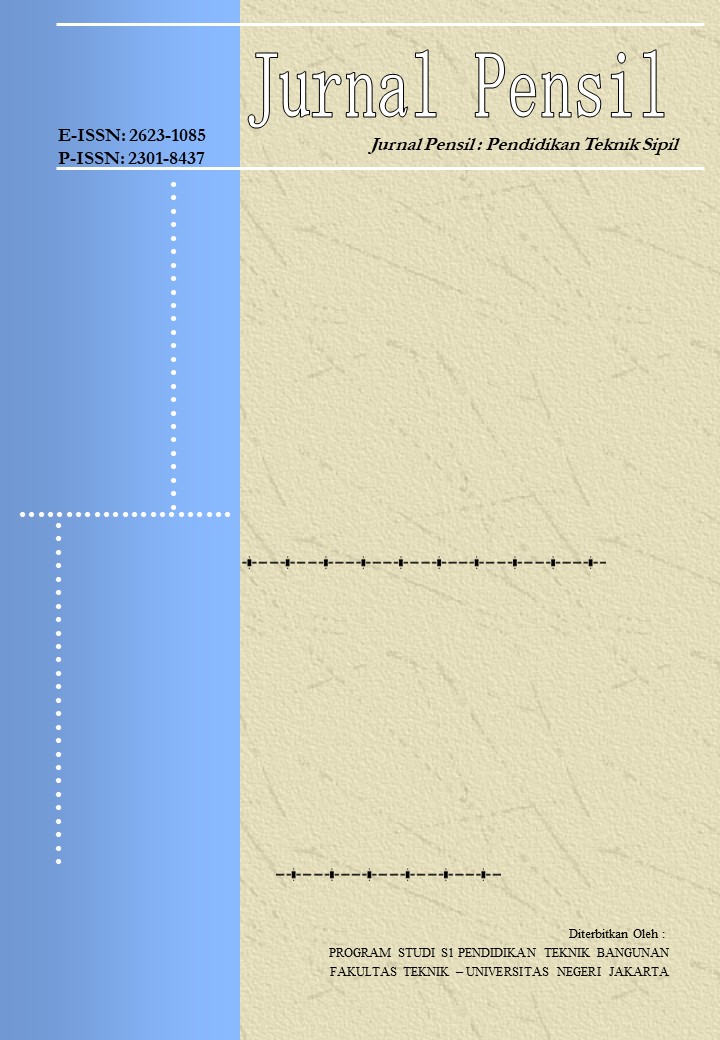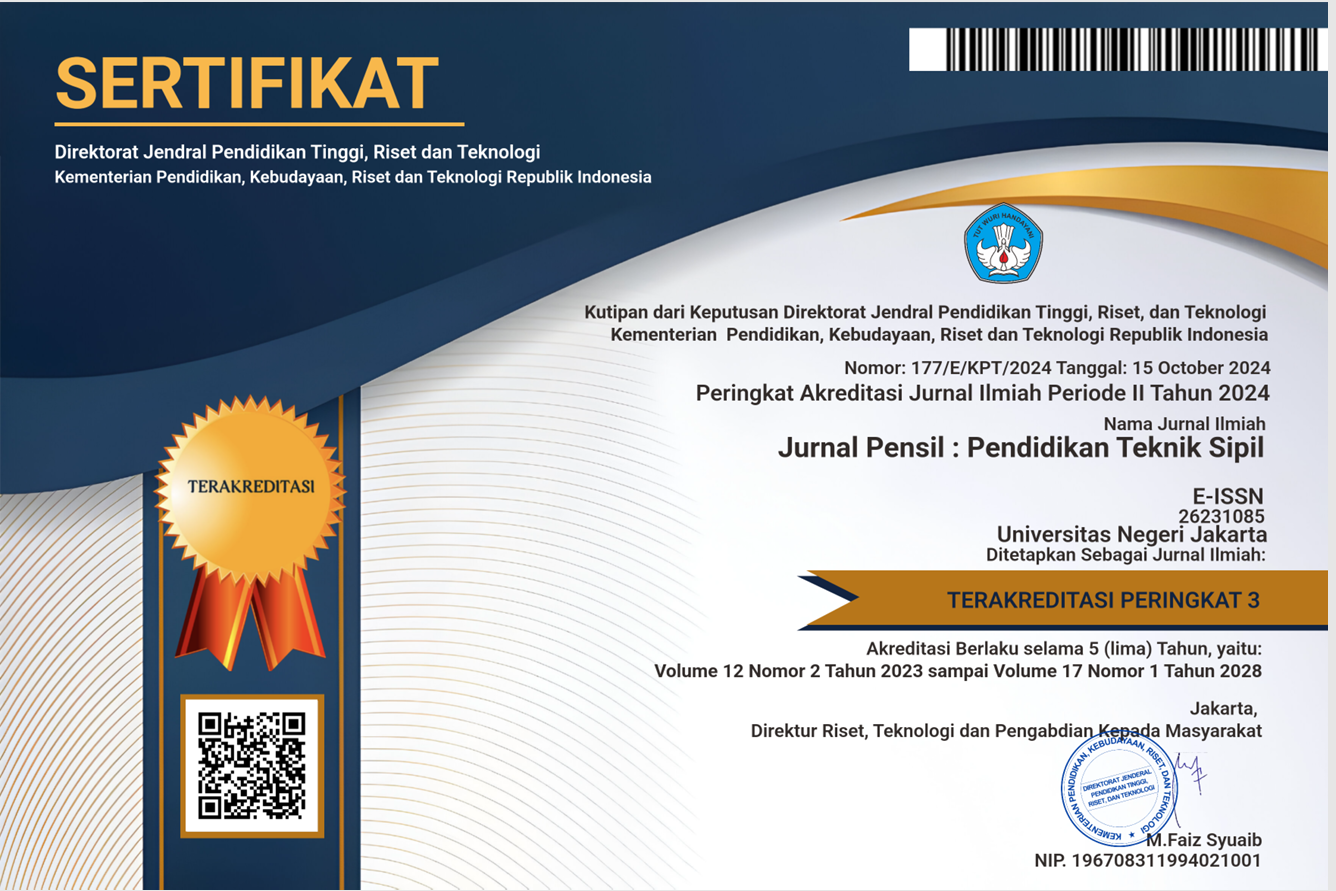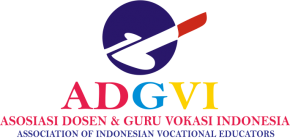EPANET MODEL CLEAN WATER NETWORK CALLIBRATION USING MODIFIED ROUGHNESS C NUMBER HAZEN WILLIAM METHOD
DOI:
https://doi.org/10.21009/jpensil.v11i2.25177Keywords:
model, calibration, roughness, pipe, pressureAbstract
The Epanet model in clean water pipelines is intended for time efficiency in calculating hydraulic behaviour. Calibration of the water pipe network is to compare the simulation results of the model to actual field observations and to see that the model that has been made is truly valid and reliable as a tool to determine the hydraulic behaviour of the network system when a change input into the system is given (e.g. the addition of pipelines and number of customer tapping debits). The pipe roughness coefficient (C) is a number that indicates the amount of energy loss due to friction between the flowing fluid and the pipe wall. The increasing age of the pipe will cause the pipe wall roughness to increase, and the energy loss will be even more significant. This research aims to calibrate the pipe network model by adjusting the C value of the actual pipe roughness coefficient according to the installed age. An initial simulation model was carried out by entering the standard pipe C value in the Hazen Williams energy loss equation in the Epanet link/pipe properties. Then a simulation is carried out by modifying the value of C according to the pipe's service life. For 600 mm steel pipe, change the C value from 150 to 87 (pipe age >30 years), HDPE 315 mm pipe changes in C value from 140 to 100 (pipe age >10 years) and 25-50 mm PVC pipe from 140 to 100 (pipe age >10 years). From the simulation results of the Epanet model-field observations, the average compressive height was obtained for five observation nodes.of 2 tails was performed paired sample test the pressure height value of the model-observation. Before modifying the value of C, the paired mean difference test results showed a significant difference between the simulation results of the model on field observations with a model significance value of 0.004, which means <0.005. There is a considerable difference between the simulations and observations, and the model is considered invalid. However, after modifying the value of C according to the actual age of the pipe, a paired sample test T average value of the compression model-observation was 0.098 > 0.005), which means that there is no significant difference between the simulation and observation. This means that the model made is quite valid. Product moment correlation between the model simulation height - field observations, the value of R = 0.967, the relationship is robust between the two results.
References
BPSDM PU. (2018). Modul Pengenalan Program EPANET. Kementerian PUPR RI.
Brater&King. (1996). Handbook of Hydraulic. University of Michigan.
Gao, T. (2017). Pipe roughness estimation in water distribution networks using head loss adjustment. Journal of Water Resources Planning and Management, 143(5), 4017007.
Gindalan, E. O. T. (2010). Newton Loop Method in Gas Pipeline Network. UMP.
Herlina, V. (2019). Panduan Praktis Mengolah Data Kuesioner Menggunakan SPSS. Elex Media Komputindo.
Hollingshead, K., & Roark, B. (2007). Pipeline iteration. Proceedings of the 45th Annual Meeting of the Association of Computational Linguistics, 952–959.
Ingeduld, P., Pradhan, A., Svitak, Z., & Terrai, A. (2008). Modelling intermittent water supply systems with EPANET. Water Distribution Systems Analysis Symposium 2006, 1–8.
Ismiyati. (2011). Statistik dan Probabilitas Untuk Teknik. Universitas Diponegoro.
Jamasb, M., Tabesh, M., & Rahimi, M. (2008). Calibration of EPANET using genetic algorithm. In Water Distribution Systems Analysis 2008 (pp. 1–9).
Karim, I. R., & Sahib, S. A. (2019). Hydraulic Analysis of Irrigation Network for the Proposed Taq-Taq Dam Using EPANET Software. Engineering and Technology Journal. https://etj.uotechnology.edu.iq/article_169055_en.html
Kind, R. J. (1986). Snowdrifting: a review of modelling methods. Cold Regions Science and Technology, 12(3), 217–228.
Kustamar, K. (2008). Strategi Pemanfaatan Model Hidraulis Dalam Perencanaan Sistem Distribusi Jaringan Air Bersih. Seminar Nasional Aplikasi Teknologi Prasarana Perkotaan.
Lijuan, W., Hongwei, Z., & Hui, J. (2012). A leak detection method based on EPANET and genetic algorithm in water distribution systems. In Software Engineering and Knowledge Engineering: Theory and Practice (pp. 459–465). Springer.
Makawimbang, A. F., Tanudjaja, L., & Wuisan, E. M. (2017). Perencanaan Sistem Penyediaan Air Bersih Di Desa Soyowan Kecamatan Ratatotok Kabupaten Minahasa Tenggara. Jurnal Sipil Statik, 5(1).
Mays, L. W. (1999). Water Distribution Systems Handbook. McGraw Hill Company.
Nuryani, N., & Santosa, B. (2020). Analisa Optimasi Diameter Jaringan Pipa Distribusi Air Bersih Dengan Menggunakan Software EPANET, LINGO di Jalur Sentul City PDAM Tirta Kahuripan Kabupaten Bogor. Rekayasa Sipil, 14(2), 136–142.
Qin, R., & Duan, C. (2017). The principle and applications of Bernoulli equation. Journal of Physics: Conference Series, 916(1), 12038.
Rishel, J. (2000). Water Pumps and Pumpings System. McGraw Hill Company.
Rossman, L. (2004). Epanet 2 User’s Manual (Water Supp). National Risk Management Research.
S Shihab, M., I Al-Hyaly, A., & H Mohammad, M. (2009). Simulation of Chlorine concentrations in Mosul University’s Distribution Network using EPANET program. Al-Rafidain Engineering Journal (AREJ), 17(6), 28–41.
Schäfle, C., & Kautz, C. (2021). Student reasoning in hydrodynamics: Bernoulli’s principle versus the continuity equation. Physical Review Physics Education Research, 17(1), 10147.
Schild, A. (2018). Time in quantum mechanics: A fresh look at the continuity equation. Physical Review A, 98(5), 52113.
Sekhri, N. K., Parikh, S., & Weber, G. M. (2019). Comparison Of Digital Manometer And Water Column Manometer Pressures Measurements During Lumbar Puncture. In Medical Devices (Auckland, NZ). ncbi.nlm.nih.gov. https://www.ncbi.nlm.nih.gov/pmc/articles/PMC6825514/
Simpson, A., Vitkovsky, J., & Lambert, M. (2000). Transients for calibration of pipe roughnesses using genetic algorithms. BHR Group Conference Series Publication, 39, 587–598.
Smith, N. F. (1972). Bernoulli and Newton in fluid mechanics. The Physics Teacher, 10(8), 451–455.
Sofia, E., Riduan, R., & Abdi, C. (2015). Evaluasi keberadaan sisa klor bebas di jaringan distribusi IPA Sungai Lulut PDAM Bandarmasih. Jukung (Jurnal Teknik Lingkungan), 1(1).
Subekti, R. A., & Susatyo, A. (2017). ANALISIS KEHILANGAN TINGGI TEKAN PIPA TRANSMISI PDAM KOTA BANDUNG UNTUK PENGEMBANGAN POTENSI ENERGI LISTRIK; HEAD LOSS ANALYSIS OF THE TRANSMISSION PIPELINE OWNED BY BANDUNG WATER SUPPLY COMPANY FOR ELECTRICITY PROSPECTS. Ketenagalistrikan Dan Energi Terbarukan, 16(1), 1–14.
Sun, G. E., & Caldwell, P. (2015). Impacts of urbanization on stream water quantity and quality in the United States. Water Resources Impact, Volume 17 Number 1., 17(1), 17–20.
Suripin. (2018). Mekanika Fluida dan Hidraulika Saluran Terbuka Untuk Teknik Sipil. Penerbit Andi.
Susanto, A., Purwanto, P., & Hadiyarto, A. (2019). Analisis kualitas air untuk konsentrasi fluoride pada sistem jaringan distribusi air minum dengan fluoridasi. ENSAINS JOURNAL, 2(1), 11–18.
Tiruneh, A. T., Debessai, T. Y., Bwembya, G. C., Nkambule, S. J., & Zwane, L. (2019). Variable chlorine decay rate modeling of the matsapha town water network using EPANET program. Journal of Water Resource and Protection, 11(01), 37.
Travis&May. (2007). Relationship between Hazen-William and Colebrook-White Roughness Values. Journal of Hydraulic Engineering.
Tuames, G. Y. K., Bunganaen, W., & Utomo, S. (2015). Perencanaan Teknis Jaringan Perpipaan Air Bersih Dengan Sistem Pengaliran Pompa Di Desa Susulaku A Kecamatan Insana Kabupaten Timor Tengah Utara. Jurnal Teknik Sipil, 4(1), 1–16.
Walt, C. van der, Chirwa, E., & Traut, D. (2021). Calibration of an EPANET model by using monitoring points in the bulk distribution of Sedibeng Water, for predicting disinfectant decay. Computer Aided Chemical Engineering. https://www.sciencedirect.com/science/article/pii/B9780323885065501741
Wicaksono, A., & Susanto, I. D. W. (2015). Sistem otomasi penggerak kamera dengan motor step sebagai alat bantu kalibrasi alat ukur panjang. Jurnal Otomasi, Kontrol & Instrumentasi, 6(2), 105.
Xiang, X., Li, Q., Khan, S., & Khalaf, O. I. (2021). Urban water resource management for sustainable environment planning using artificial intelligence techniques. Environmental Impact Assessment …. https://www.sciencedirect.com/science/article/pii/S0195925520307939
Yani, I., Siregar, F. F., & Sitorus, D. S. T. (2019). IDENTIFIKASI PLAT MOBIL DENGAN MENGGUNAKAN METODE JARINGAN SYARAF TIRUAN KOHONEN PADA SISTEM PARKIR CERDAS. Prosiding Seminar Nasional Teknoka, 4, I26–I31.
Zanoni, B., Peri, C., Giovanelli, G., & Pagliarini, E. (1998). Design and setting up of a water vapour pressure capacitance manometer for measurement of water activity. Journal of Food Engineering. https://www.sciencedirect.com/science/article/pii/S0260877498001289











.png)
.png)
1.png)

